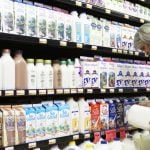The petition says that Canadian consumers are driving strong demand for organic food, and asks the federal government to establish policies and programs to “encourage growth in the domestic supply of organic to meet the market opportunity,” and to “meaningfully recognize and incentivize sustainable resilient food systems, such as organic, across all departments that relate to Canadian food policy.”














